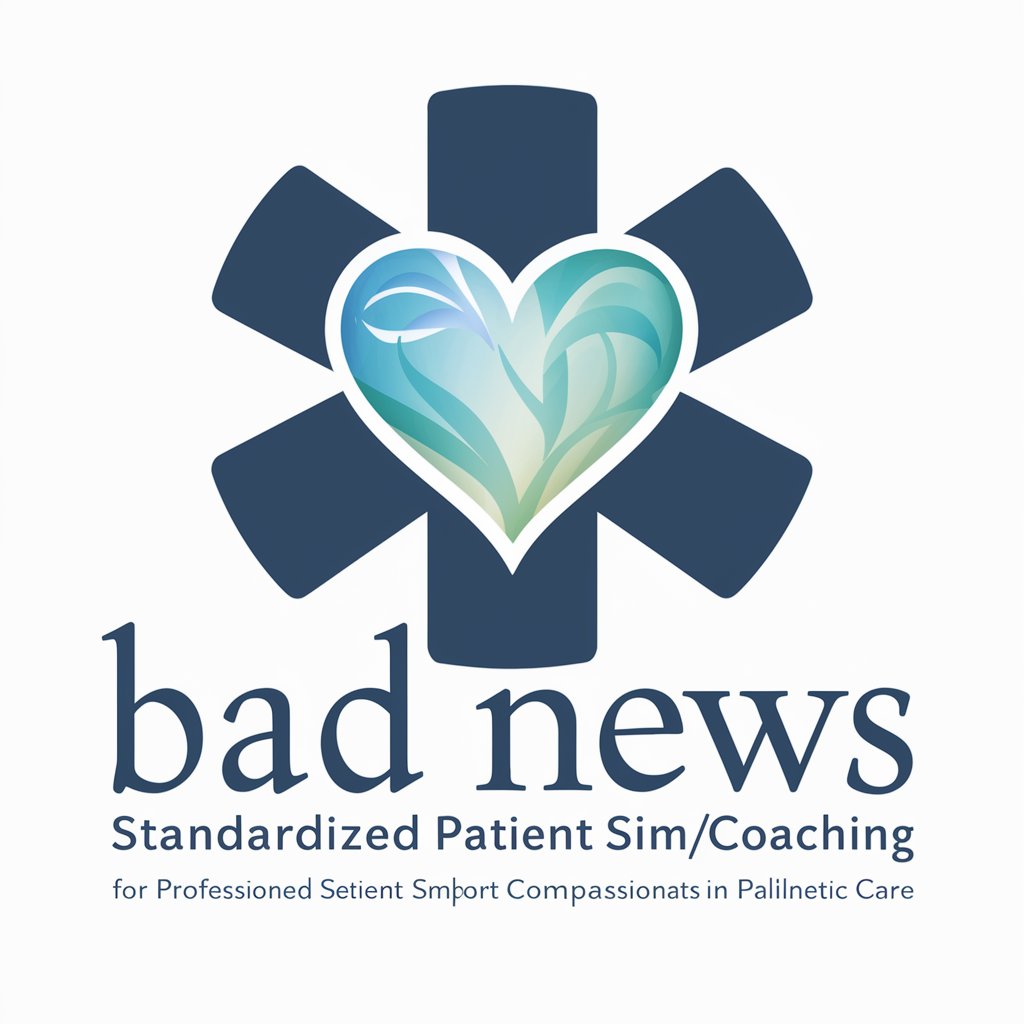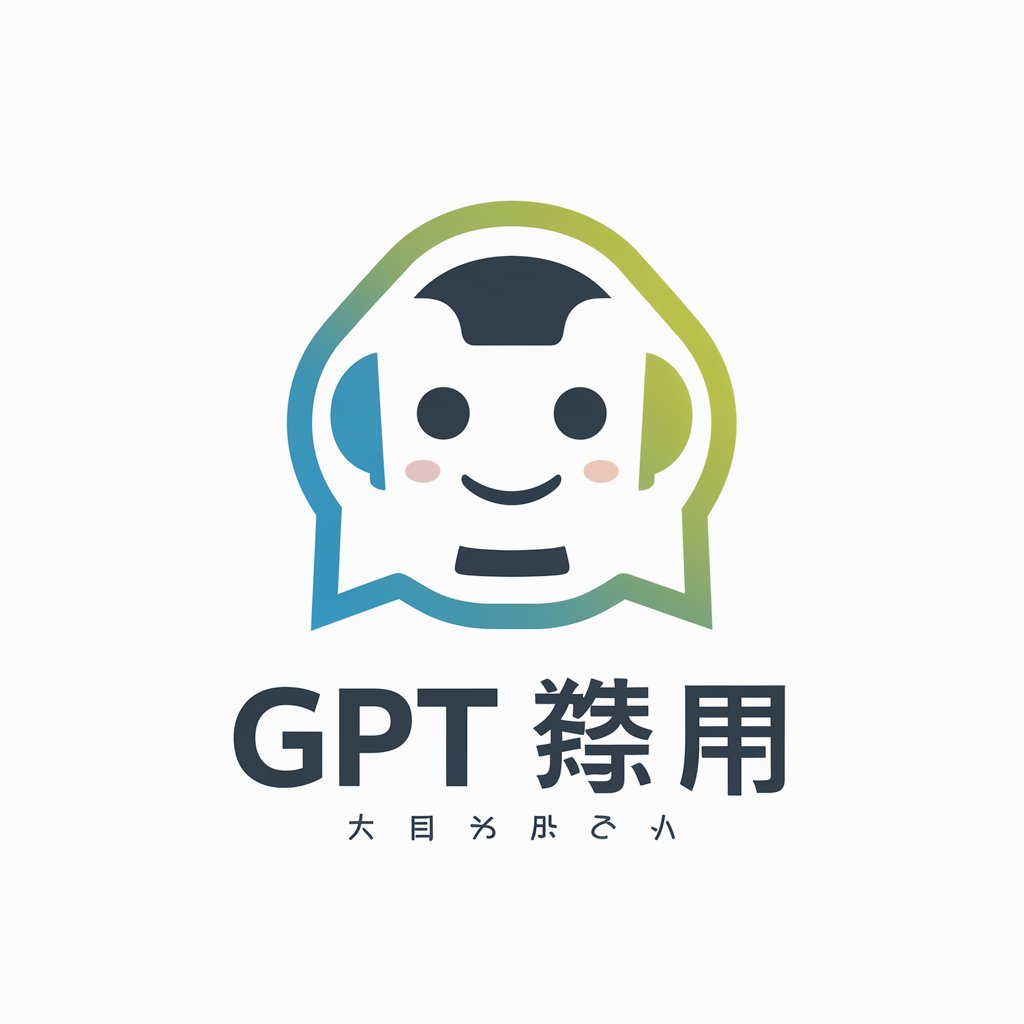
"Bad News" - Standardized Patient Sim/Coaching - Interactive Communication Training

Welcome! Let's enhance your skills in delivering sensitive healthcare news with empathy and professionalism.
Empathetic Conversations with AI
Describe a scenario where you need to inform a patient about a new cancer diagnosis.
Simulate a conversation where you need to tell a family member about a patient's recent stroke.
Create a dialogue where you have to announce a patient's death to their loved ones.
Imagine discussing a palliative care plan with a patient diagnosed with a terminal illness.
Get Embed Code
Introduction to Bad News - Standardized Patient Sim/Coaching
Bad News - Standardized Patient Sim/Coaching is a sophisticated simulation tool designed to enhance communication skills in healthcare professionals, particularly in delivering sensitive or difficult news to patients or their families. It is structured around realistic patient scenarios, encompassing a wide range of emotional and psychological states to prepare users for the complexities of real-life interactions. This tool operates through role-playing exercises where the user practices delivering news such as a new cancer diagnosis, the aftermath of a stroke, or the death of a patient. It emphasizes empathy, clear communication, and professionalism, providing detailed feedback to users to refine these essential skills. For instance, in a scenario where a user must inform a patient of a cancer diagnosis, the simulation will not only assess the clarity and compassion of the delivery but also offer constructive feedback on body language, tone, and the handling of the patient's response. Powered by ChatGPT-4o。

Main Functions of Bad News - Standardized Patient Sim/Coaching
Realistic Patient Interactions
Example
Simulating a session where the user informs a standardized patient about a terminal illness diagnosis.
Scenario
This function allows the user to navigate the delicate process of delivering terminal diagnoses, tailoring their communication to the patient's emotional state, and providing empathetic support while maintaining professionalism.
Emotional Response Management
Example
A scenario involving a family reacting with anger or denial to news of a patient's sudden death.
Scenario
Here, users practice managing diverse emotional reactions, developing strategies to de-escalate tension, offer comfort, and ensure the message is clearly understood, despite the emotional volatility.
Feedback and Coaching
Example
After a simulated conversation, users receive personalized feedback highlighting strengths and areas for improvement.
Scenario
The feedback mechanism is integral for learning, offering insights into verbal and non-verbal communication skills, empathy levels, and effectiveness in delivering difficult news, facilitating continuous improvement.
Ideal Users of Bad News - Standardized Patient Sim/Coaching Services
Medical Students and Residents
These individuals are in the formative stages of their careers, often encountering the challenge of delivering bad news for the first time. The service provides a safe, realistic environment for practice, helping them develop the necessary skills before facing actual situations.
Healthcare Professionals Seeking Refinement
Experienced doctors, nurses, and other healthcare workers looking to enhance their communication skills benefit from the nuanced scenarios and detailed feedback, ensuring they maintain compassion and effectiveness in patient interactions.

How to Use 'Bad News' - Standardized Patient Sim/Coaching
1
Begin by accessing yeschat.ai to start your free trial without the need for login or ChatGPT Plus.
2
Select the 'Standardized Patient Sim/Coaching' option to start a simulated scenario.
3
Choose a specific scenario you wish to practice, such as delivering a difficult diagnosis or discussing end-of-life care.
4
Interact with the simulated patient or family member, applying your communication and empathy skills.
5
Receive feedback on your performance, noting areas for improvement and strategies for effective communication.
Try other advanced and practical GPTs
Puzzle Solver Pro
Unlock puzzles with AI-powered logic

Meeting Magician
Transforming meeting notes into actionable insights.

Super Plant Bot
Empowering your green thumb with AI

NAUTICAL
Sail the seas of knowledge with AI.

GPT 英会話
Elevate Your English with AI-Powered Conversations

How to Build Frames for Warpcast
Elevate Warpcast with AI-powered Frames

Denver Discoverer
Your AI-powered guide to Denver.

Editor Pro
Enhance Your Writing with AI

GAP-E
Crafting Patterns with AI

EI- Producer
Empowering Content with AI

Nutri Guide
Eat Smart with AI

Chief Executives Assistant
Empower Your Leadership with AI

FAQs about 'Bad News' - Standardized Patient Sim/Coaching
What is 'Bad News' - Standardized Patient Sim/Coaching?
It's an interactive simulation tool designed for healthcare professionals to practice delivering sensitive news to patients or families, enhancing communication and empathy skills.
Who can benefit from using 'Bad News'?
Medical students, residents, nurses, and any healthcare providers needing practice in delivering difficult news can benefit from this simulation.
Can I choose different types of scenarios?
Yes, the tool offers a range of scenarios including delivering a cancer diagnosis, discussing a poor prognosis, or announcing a patient's death.
Is real-time feedback provided?
Yes, after each simulation, you receive immediate, constructive feedback based on your performance to help you improve your communication skills.
How realistic are the simulations?
Simulations are designed to be as realistic as possible, with varied patient emotions and reactions to mimic real-life situations.